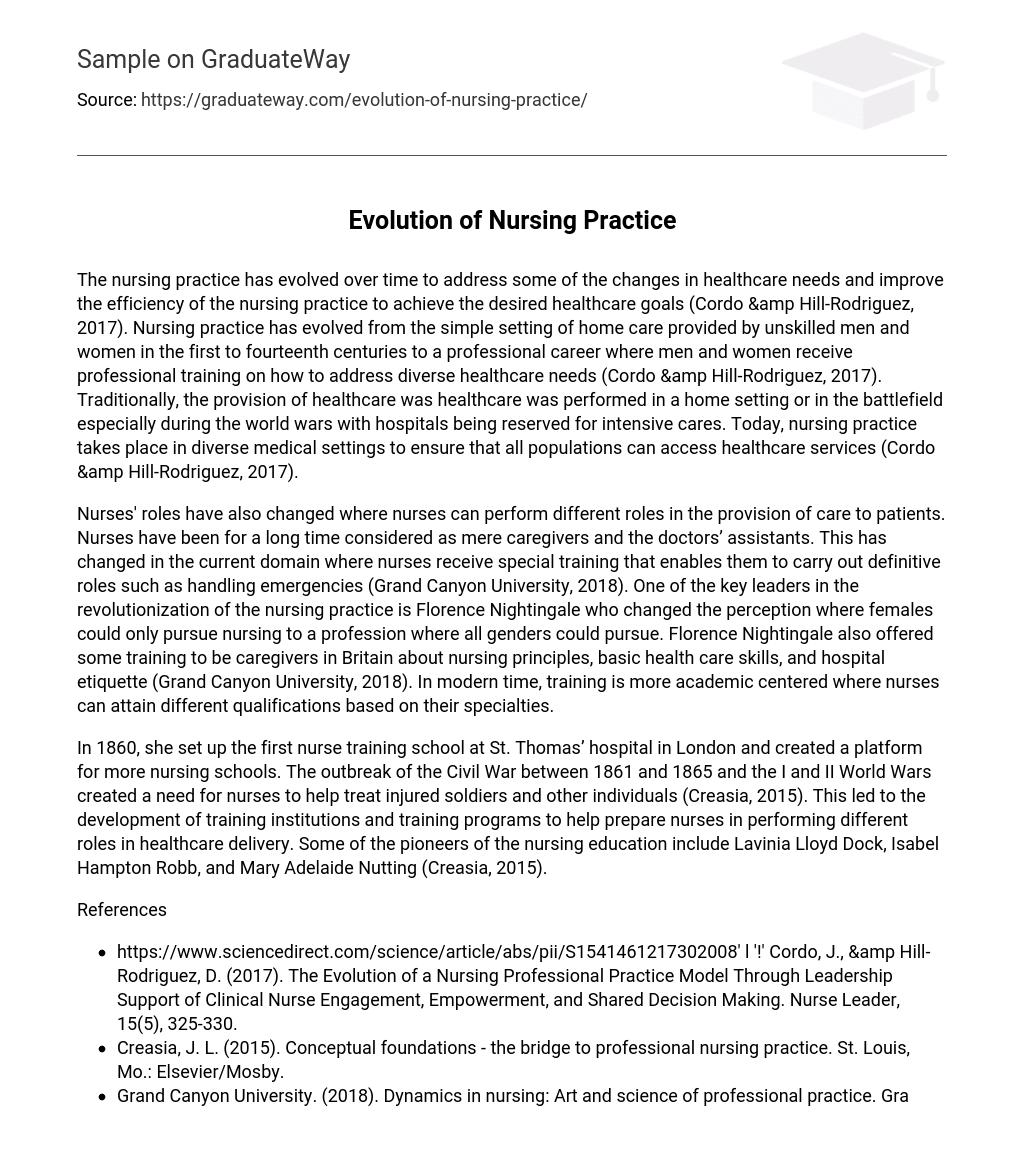The nursing practice has evolved over time to address some of the changes in healthcare needs and improve the efficiency of the nursing practice to achieve the desired healthcare goals (Cordo & Hill-Rodriguez, 2017). Nursing practice has evolved from the simple setting of home care provided by unskilled men and women in the first to fourteenth centuries to a professional career where men and women receive professional training on how to address diverse healthcare needs (Cordo & Hill-Rodriguez, 2017). Traditionally, the provision of healthcare was healthcare was performed in a home setting or in the battlefield especially during the world wars with hospitals being reserved for intensive cares. Today, nursing practice takes place in diverse medical settings to ensure that all populations can access healthcare services (Cordo & Hill-Rodriguez, 2017).
Nurses’ roles have also changed where nurses can perform different roles in the provision of care to patients. Nurses have been for a long time considered as mere caregivers and the doctors’ assistants. This has changed in the current domain where nurses receive special training that enables them to carry out definitive roles such as handling emergencies (Grand Canyon University, 2018). One of the key leaders in the revolutionization of the nursing practice is Florence Nightingale who changed the perception where females could only pursue nursing to a profession where all genders could pursue. Florence Nightingale also offered some training to be caregivers in Britain about nursing principles, basic health care skills, and hospital etiquette (Grand Canyon University, 2018). In modern time, training is more academic centered where nurses can attain different qualifications based on their specialties.
In 1860, she set up the first nurse training school at St. Thomas’ hospital in London and created a platform for more nursing schools. The outbreak of the Civil War between 1861 and 1865 and the I and II World Wars created a need for nurses to help treat injured soldiers and other individuals (Creasia, 2015). This led to the development of training institutions and training programs to help prepare nurses in performing different roles in healthcare delivery. Some of the pioneers of the nursing education include Lavinia Lloyd Dock, Isabel Hampton Robb, and Mary Adelaide Nutting (Creasia, 2015).
References
- https://www.sciencedirect.com/science/article/abs/pii/S1541461217302008′ l ‘!’ Cordo, J., & Hill-Rodriguez, D. (2017). The Evolution of a Nursing Professional Practice Model Through Leadership Support of Clinical Nurse Engagement, Empowerment, and Shared Decision Making. Nurse Leader, 15(5), 325-330.
- Creasia, J. L. (2015). Conceptual foundations – the bridge to professional nursing practice. St. Louis, Mo.: Elsevier/Mosby.
- Grand Canyon University. (2018). Dynamics in nursing: Art and science of professional practice. Grand Canyon University.





